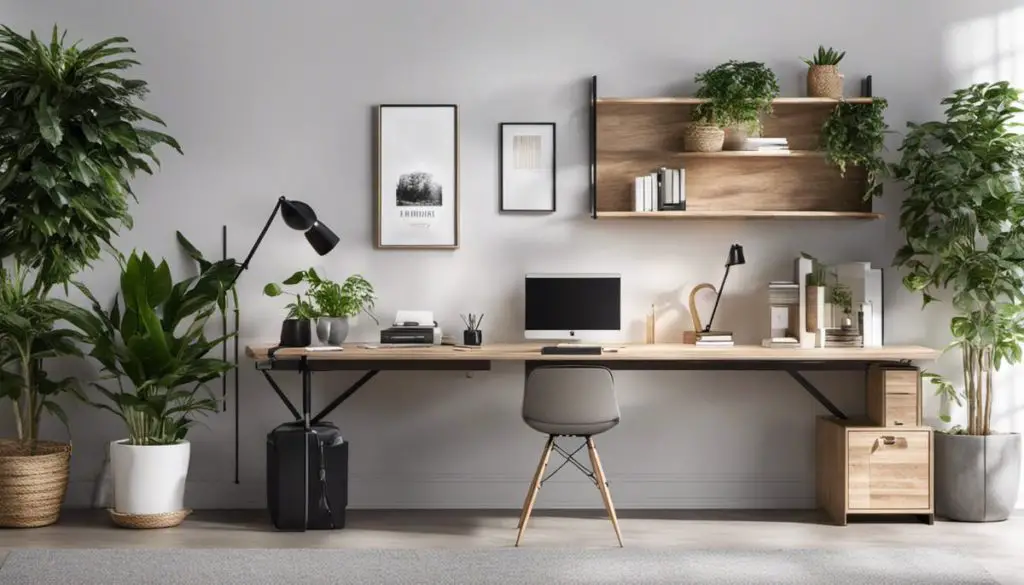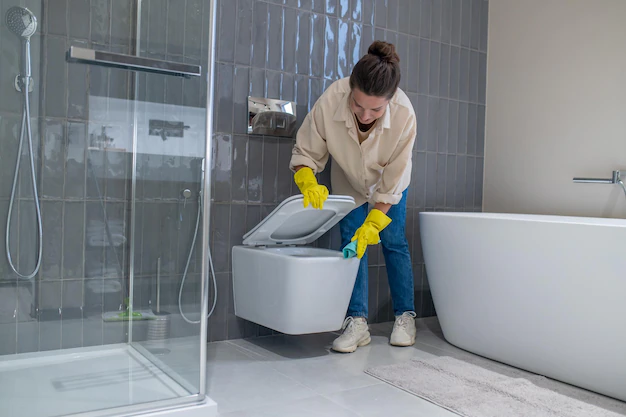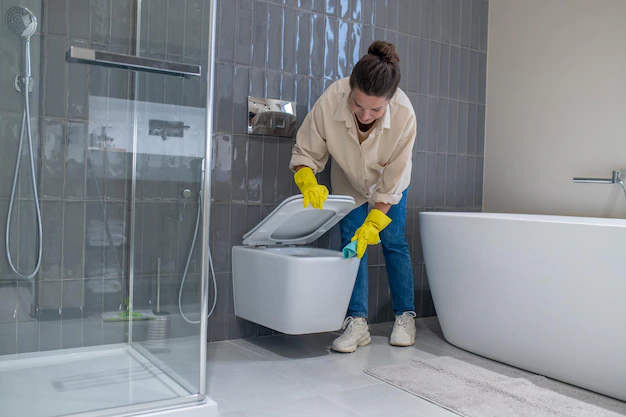In today’s modern era, work from home has become a mainstream mode of work. While it brings the convenience of eliminating daily commutes, it also introduces unique challenges, especially in regards to creating a productive workspace, achieving a healthy work-life balance, and maintaining physical and mental wellness. This piece explores these facets, providing insight on how to shape an efficient, distraction-free workspace, manage personal and professional time, and adopt strategies to ensure overall well-being.
Creating a productive workspace
Understanding the Importance of a Dedicated, Distraction-Free Workspace
Creating a dedicated, distraction-free workspace is crucial for productivity when working from home. This involves setting up a space in the home exclusively for work. The space must be free from distractions that could hinder concentration or lead to wasted time. Some common distractions include noise from televisions, family members or pets, clutter, and outside views. Ensuring the workspace is quiet, organized, and distinct from leisure spaces promotes focus and productivity during working hours.
Exploring Different Workspace Setups
There are several workspace setup options, which will depend largely on the available space at home and the nature of your work. For instance, you can repurpose an unused room into a home office, use a standing desk, or even a mobile workstation for convenience. In setting up your workspace, consider ergonomics to prevent physical strain. Your monitor should be at eye level, the chair should be comfortable and adjustable, and your keyboard should be positioned so that your wrists are straight and flat.
The Right Way to Sit to Avoid Strain
Poor posture over extended periods can lead to several health problems like back pain, neck strain, and carpal tunnel syndrome. To avoid these issues, sit at the back of your chair and adjust the height so your feet rest flat on the floor. The desk height should be at or slightly below elbow level when you’re sitting upright. Your arms should be parallel to the floor when typing, and your monitor should be set up at eye level, about an arm’s length away.
Improving Workspace Lighting
Proper lighting is vital to avoiding eye strain and maintaining productivity. Poor lighting can cause headaches, fatigue, and decreased concentration. Opt for natural light sources wherever possible, without creating glare on your computer screen. If natural light isn’t an option, consider soft, indirect lighting such as a desk lamp with a diffuser. Avoid harsh overhead fluorescent lighting that can strain the eyes.
Keeping the Workspace Clean and Organized
Keeping your workspace clean and organized not only keeps distraction at bay but also fosters a sense of control and satisfaction that can boost productivity. Use desk organizers to keep your workspace tidy. Regularly clean your desk, keyboard, mouse, and any other equipment you use frequently. Digital clutter can also distract and impede productivity, so keep your digital files and emails organized too. Making these practices a habit can go a long way towards creating a productive workspace for working from home.

Balancing work and personal time
Set a Consistent Schedule
Creating a regular schedule is key to maintaining a healthy work-life balance. Consider starting and ending your workday at specific times and endeavor to stick to these like you would in an office setting. Having defined work hours can help separate your work time from your personal time. In addition to working hours, it’s also crucial to have a predetermined lunch break and routine short breaks to refresh your mind.
Prioritize Your Tasks
Every morning, set time to prioritize and plan your tasks for the day. This can help stave off feelings of being overwhelmed and allows you to concentrate on what’s most important. Use tools such as calendars, task lists, and even applications that can give reminders of impending deadlines. This activity may well serve as an insightful visualization of your workload, enabling you to manage your time effectively and balance your work and personal life.
Create a Dedicated Workspace
When working from home, it’s important to have a specific area designated for work. This could be a home office, an area in your living room, or even a neat corner in your bedroom. The goal is to have a space that psychologically prepares you for work. Having a dedicated workspace contributes to work-life balance by separating your work area from your relaxation zones.
Break Up Your Day
Work breaks are essential when working from home. Short breaks every hour or two have been shown to improve productivity and mental agility while reducing stress. During these breaks, move around to stretch, hydrate, or have a healthy snack. Try to spend some time outdoors for fresh air if possible.
Avoid Overwork
It’s easy to lose track of time and overwork when your office is just a few steps away. Schedule your day to ensure you’re not working beyond your standard work hours. Furthermore, learn to recognize when you’re being unreasonably hard on yourself and remember that it’s okay to step away and get some rest.
Set Boundaries
Establish boundaries to prevent work from spilling into your personal life. This can be especially challenging when you’re living and working in the same space. Shut off notifications after your work hours, and make sure to inform your colleagues about your availability. By setting boundaries, you make clear separations between your work and personal life, which is vital for maintaining your well-being.
Seek Support If Needed
Despite your best efforts, it can sometimes be challenging to manage stress and strike a balance between your work and personal life while working from home. It’s okay to reach out to a coach, mental health advisor, or trusted mentor who can provide you with additional strategies, lend an empathetic ear, and provide perspective when you need it.

Photo by martenbjork on Unsplash
Maintaining physical and mental wellness
The importance of Regular Exercise while Working from Home
Working from home has surfaced as a new norm in today’s digital age. It is crucial to incorporate regular exercise into your daily routine. This not only improves overall physical health but also boosts mental wellbeing. Small workouts, such as 10-minute stretch breaks, a quick cardio session, or yoga, can be conveniently integrated within your workday. These regular breaks for exercise can help reduce fatigue, alleviate physical tension caused by long sitting hours, and increase productivity.
Staying Hydrated and Eating Healthily
Drinking plenty of water is essential to keep the body functioning properly. Hydration aids cognitive performance and physical stamina, both of which are integral for effective work-from-home experience. Aim for at least two liters of water daily. Likewise, a well-balanced diet is equally important. Eating nutrient-rich foods like fruits, vegetables, lean proteins, and whole grains can provide energy and focus throughout your workday. Try scheduling meals and snacks around your workday to prevent hasty unhealthy food choices.
Stress Management Techniques
Working from home comes with its own set of challenges which may contribute to increased levels of stress. It’s essential to recognize early signs of stress and implement effective coping strategies. Techniques such as deep breathing, mindfulness, meditation, and progressive muscle relaxation can help manage stress levels. Prioritizing tasks, setting a work cut-off time, and taking regular breaks can also bring better work-life balance and reduce stress.
Importance of Maintaining Social Contacts Virtually
Working from home can lead to feelings of isolation and loneliness. For this reason, it’s essential to maintain social contracts virtually. Make sure to keep regular communication with coworkers, family, and friends. This can be as simple as a daily check-in, virtual meetings, or online social events. Staying connected can assist in maintaining emotional wellbeing and creating a sense of normalcy. This also promotes collaboration, team spirit, and provides an opportunity to share ideas and concerns.
Conclusion
Working from home comes with its own set of unique challenges. However, by incorporating regular exercise, eating healthily, staying hydrated, managing stress and maintaining virtual social connections one can sustain physical and emotional wellness. These positive habits also help increase productivity and improve the overall work-from-home experience.

To sustain a healthy, productive lifestyle while working from home, it requires more than just an efficient workspace. It calls for a well-structured routine, conscious efforts at boundary setting, and strategies to promote physical and mental wellness. Embracing these practices not only boosts productivity but also enhances work satisfaction and overall quality of life. Working from home can indeed be a fulfilling experience when navigated with the right approach and mindset.



